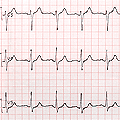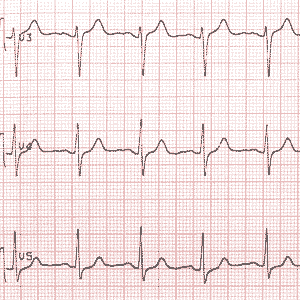Description of the test
An exercise stress test determines if your heart muscle is getting enough blood and oxygen during physical activity. The test records your heart's electrical activity as it responds to an increased work load, like exercising. This test usually takes place in a hospital, clinic, or other specialized room with the necessary equipment.
How often should the test be performed?
Your doctor will decide when and how frequently this test is required.
Why is this test performed?
An exercise stress test is used to evaluate chest pain, identify abnormal heart rhythms, or screen people for cardiovascular disease. It is also used to determine how well the heart tolerates exercise in cases where someone has heart disease or has had a heart attack.
When you exercise, your heart needs more blood and oxygen. If a part of your heart is not getting sufficient blood, this test will identify those abnormalities.
An exercise stress test can also be used to identify narrowing of the arteries after surgical procedures take place (e.g., angioplasty or coronary artery bypass surgery) or to evaluate the effectiveness of certain medications.
Are there any risks and precautions?
Although an exercise stress test is generally considered safe, it does have some risk of side effects or complications. Though rare, the side effects or complications may include:
- irregular heart rhythm (this can occur while you are exercising)
- chest pain (angina)
- a heart attack
- shortness of breath
- fainting
- falling
As a precaution before the test, discuss with the person performing the test how to signal that you are under too much stress (e.g., you can't breathe or you feel faint).
Do not take this test if you have recently had a heart attack or have uncontrolled high blood pressure. Bone or joint problems should be discussed with your doctor before taking this test.
What happens during the test?
Electrodes (wires coated in plastic) will be taped to your chest, arms, and legs. These wires measure your heart's electrical patterns as you exercise. A technician may need to shave areas of the skin where hair may interfere with the attachment of the electrode. You will first have an electrocardiogram at rest, and your blood pressure will be measured.
During an exercise test, you will be asked to perform one of the following:
- walking, slowly at first, and possibly running on a treadmill
- pedalling on a stationary bicycle
You'll start walking on a treadmill or pedalling on a bicycle for a few minutes. After a few minutes, the speed and incline of the treadmill or the resistance of the bike will increase. The speed, incline, or resistance will continue to increase at preset intervals so you will be walking faster or pedalling harder. The exercise test continues until either you have to stop, you reach your maximum heart rate, or the supervising physician feels that it may be dangerous for you to continue. Your blood pressure, heart rate, and ECG will be recorded at intervals during the test.
During the test, if you feel chest pain or pressure or shortness of breath, or if you can't continue walking or pedalling, tell the technician or doctor immediately. Don't try to get off the treadmill while it's moving as this can be dangerous.
Your appointment will last about one hour, with the actual testing time usually taking approximately 15 minutes.
How should I prepare for this test?
Tell your doctor if you have any medical conditions (e.g., arthritis or diabetes) that might prevent you from walking or running on a treadmill, or pedalling a bike.
Tell the person performing the test if you have experienced chest pain or chest pressure on the day of the test.
Tell your doctor or prescriber about all prescription, over-the-counter (non-prescription), and herbal medications that you are taking. Also tell them about any medication allergies and medical conditions that you may have.
Ask your doctor or pharmacist whether you need to stop taking any of your medications before the test. Some medications, such as pills for erectile dysfunction, can interact with other medications that may be given during the test causing a dramatic decrease in blood pressure.
Wear running shoes and loose-fitting, comfortable clothes for the test. Do not eat, smoke, or drink alcoholic beverages for several hours before the test. Avoid caffeine for 24 hours before the test, in case further tests are required.
If you use an inhaler for asthma or lung disease, bring it with you to the test.
What can I expect after the test?
The monitoring equipment continues to read the electrical patterns of your heart and your blood pressure for several minutes after the treadmill stops. You can rest or lie down after the test is over.
You may return to your normal activities once your blood pressure and heart rate return to normal.
Results
After the test has been interpreted by the supervising doctor, it may take up to a week for your doctor to receive the results. Your doctor will then discuss the results with you and determine if a change in your medications is needed, or if other tests are required.



